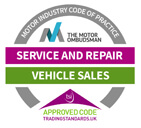Automatic vs manual – which is best?
One of the questions we are frequently asked at GO Vauxhall is whether manual or automatic transmission is better. Currently manual transmission cars are still more popular in the UK than cars with automatic transmission. However, sales of automatic cars are on the increase. In 1998 automatic cars made up just 15% percent of new car registrations in the UK. By 2017 this had risen to 35 percent (1) – a significant increase but still far lower than figures for the US, where automatics make up around 95 percent of new car sales, with manual transmission generally reserved for sports cars.

Automatic options
The development of more types of efficient automatic gearbox is one of the factors that has contributed to their growth in popularity. The different types of automatic transmission available include traditional automatic, dual clutch transmission (DCT), continuously variable transmission (CVT), and a clutchless manual gearbox. It’s important to check which type of automatic gearbox you would be getting in any cars you are considering purchasing.
- A traditional automatic has a torque converter with a hydraulic system between the engine and the gearbox, which removes the need for a clutch.
- DCT uses two clutches so that one can be prepared for the next gear change while the other is used for driving. This results in smoother gear shifts. Although this type of transmission can be more expensive, it is becoming increasingly popular thanks to the smoother driving experience. Several car manufacturers have their own names for this, such as DSG from Volkswagen, and PDK from Porsche.
- Continuously variable transmission, or CVT, effect very smooth gear shifts as it has no cogs and no fixed gears. CVT is best with a powerful engine – if not, you can find it generates high revs and louder engine noise.
- The clutchless manual uses an electronic motor to make the gear shifts for you. Again, this can be branded by manufacturer, such as Vauxhall’s Easytronic.
So how do you choose whether manual or automatic is most suitable for you?
There are several factors you will want to consider, such as the type of driving you do, on what type of roads and whether you enjoy having complete control over your gear shifts. Other considerations should include the initial price of the vehicle, the cost of maintenance, and the fuel efficiency you can expect.
Advantages of a manual gearbox:
- Cars with a manual gearbox tend to be cheaper than their automatic counterparts.
- Many people simply enjoy being in control of the gear changes, so they can make the shift exactly when they want to, as they feel the engine needs it.
- Some drivers feel that having an automatic takes the fun out of driving, after all there is a certain satisfaction to be had from making a smooth gear change, or from having the choice to make a shift a little later to boost the power available.
Disadvantages of a manual gearbox:
- If many of your journeys involve driving on congested roads, a manual vehicle can be frustrating, as you are constantly having to make shifts in stop-start traffic.
- Although maintenance is generally a little cheaper for a manual vehicle, if you are unfortunate enough to have the clutch fail and need to have it replaced, this will be a costly repair.
Advantages of an automatic gearbox:
- Automatic transmission gives you better control as it means that you can keep both hands on the wheel.
- Most drivers find that manual gear changes become second nature after a while, but for newly qualified drivers, they can be a distraction, and an automatic could be a helpful choice.
- Driving in stop-start traffic is easier as you don’t have the need to constantly shift gear. Whether you do a lot of city driving or travel on motorways that are prone to congestion, such as the M25, an automatic can make driving in heavy traffic a little less stressful.
- Automatics used to be associated with poor fuel economy, but as the technology has improved, fuel efficiency is often better with an automatic gearbox. For example, for the VW Golf, currently the UK’s best-selling new car, the SE edition with seven-speed auto DSG transmission delivers 72.4mpg, while the most efficient of the six-speed manual versions gives you 67.3mpg.
- Automatic cars tend to retain their value better than manual editions.
- Hill-starts are straightforward in an automatic.
Disadvantages of an automatic gearbox:
- Some automatic gearboxes can be slow to shift gear, for example when you are travelling down a steep hill, resulting in a straining sound of high revs from the engine.
- Maintenance costs can be higher for an automatic transmission than for manual.
- If you learn to drive in an automatic, you are only eligible to drive an automatic in the UK, whereas if you learn to drive in a manual vehicle, you are permitted to drive either a manual or an automatic.
Ultimately it all comes down to your own priorities and the type of driving you do. Consider which factors from control, cost and convenience are most important to you, and this will help you to decide whether a manual or an automatic is the best choice for you. Our professional advisers at GO Vauxhall are on hand to give you any advice you need on which type of transmission would work best for you. Phone us or call in to one of our GO Vauxhall showrooms in London, the South East for more information about manual versus automatic transmission.

 Find us
Find us
 Contact Us
Contact Us


 My account
My account













